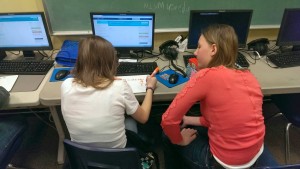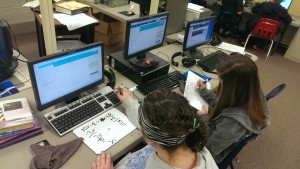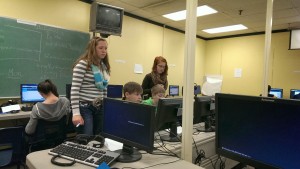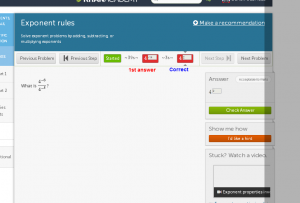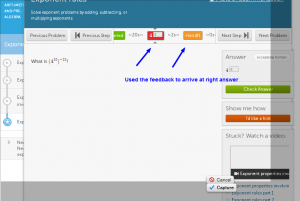Edcamp Parkersburg 2014 Summary
On April 5, 2014 educators from the area came together at Blennerhassett Middle School for West Virginia’s first Edcamp. Edcamp Parkersburg included educators from Wirt, Jackson, and Wood counties. Leanna Prater, a TIS from Lexington, KY also joined us. Leanna is a PHS alumni and heard about Edcamp Parkersburg from participating on #wvedchat Thursday nights on Twitter. Robert John Meehan once said “Our most valuable resource is each other. Without collaboration our growth is limited to our own perspectives.” That quote became the theme of our Edcamp.
The morning of Edcamp begins by creating the session board. At this time, all participants get a chance to suggest topics they’d like to learn more about, propose topics of discussion, or schedule a session they’d like to facilitate. At 9:00 the participants scattered to the session of their choosing. The first hour included topics like student motivation and using Twitter to build a professional learning network. The 50 minute session flew by and immediately you could see participants extending the conversation to the hallways between sessions. I overheard one of the principals in attendance say “Now this is real learning.”
Garnet Hillman, a Spanish teacher from Illinois and moderator of the weekly #sblchat (standards based learning chat) on Twitter, joined Edcamp Parkersburg via Google Hangout and shared her standards based grading experience with about 20 participants. How incredible it was for Garnet to join us to help expose local educators to this alternative form of communicating student learning. Several educators were charged to reflect on their own grading practices. Garnet concluded by encouraging us to support each other as we continue exploring SBG. She also invited the participants to use #sblchat on Twitter as a resource as there are many experts sharing their experience daily.
After lunch educators returned for three more Edcamp sessions of their choosing. The afternoon sessions included topics like flipping the classroom, Google docs in the classroom, National Board & SAS curriculum integration, and classroom management just to name a few. Sessions are very discussion-based and everyone is encouraged to provide their input. “The group is smarter than the individual” is often cited at Edcamps because emphasis is placed on sharing the experiences of all in order for all to move forward. Edcamp Parkersburg was about all participants improving their practice, engaging in conversations they’ve never had time to engage in before, and supporting each other in the journey. Throughout the day, it was as if a community was being created. That sentiment was verified at the smackdown. The smackdown is a common event at many other Edcamps where all participants are given the opportunity to provide verbal testimony of their experience that day. During our smackdown Tim Murray, assistant principal at Wirt County High School, shared how his basketball players were playing in a tournament that day. One of his players texted him earlier that day to ask if he would be present for the game. He responded with “No, I have to attend some professional development today and can’t make it.” His player responded with “have fun” to which Coach Murray returned “It’s usually not fun.” Tim went on to explain how Edcamp Parkersburg far exceeded his expectations and he wanted to pursue having an Edcamp with his school. Kevin Campbell, principal at Hamilton Middle School, echoed Tim’s experience and shared how he always expects at least one aha! moment. He explained that in the morning sessions alone, he had at least 4 of those moments. The following are some more quotes from the smackdown, I feel they speak for themselves:
-
I willingly got out of bed at 6:30 on a Saturday on spring break and came to work and I’m incredibly happy about it. I loved it.
-
I want this in my school now.
-
My big aha! is that we did this so well with so few. Just imagine the resources in our counties with even more input from others.
-
I learned more through this than sitting through any guest speaker.
The participants were also encouraged to tweet about Edcamp Parkersburg using #edcamppkb and those tweets were collated at https://storify.com/Mr_Oldfield/edcamppkb-tweets. We encourage educators to join in similar conversations weekly on Thursday’s at 7:30 using #wvedchat on Twitter. Several local educators, others in our state, and some from across the country are reflecting, sharing, and learning each week from conversations just like the ones at Edcamp. Look out for the 2nd Edcamp in our area coming up Fall 2014.
Derek Oldfield

